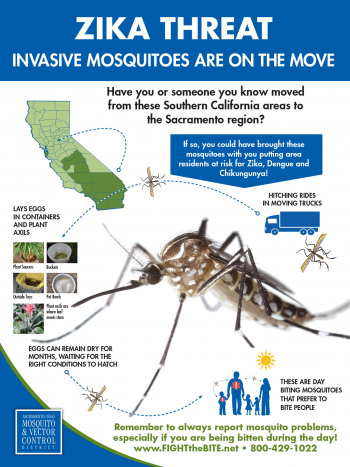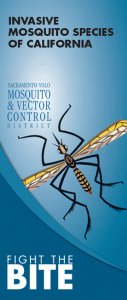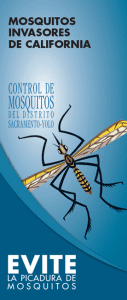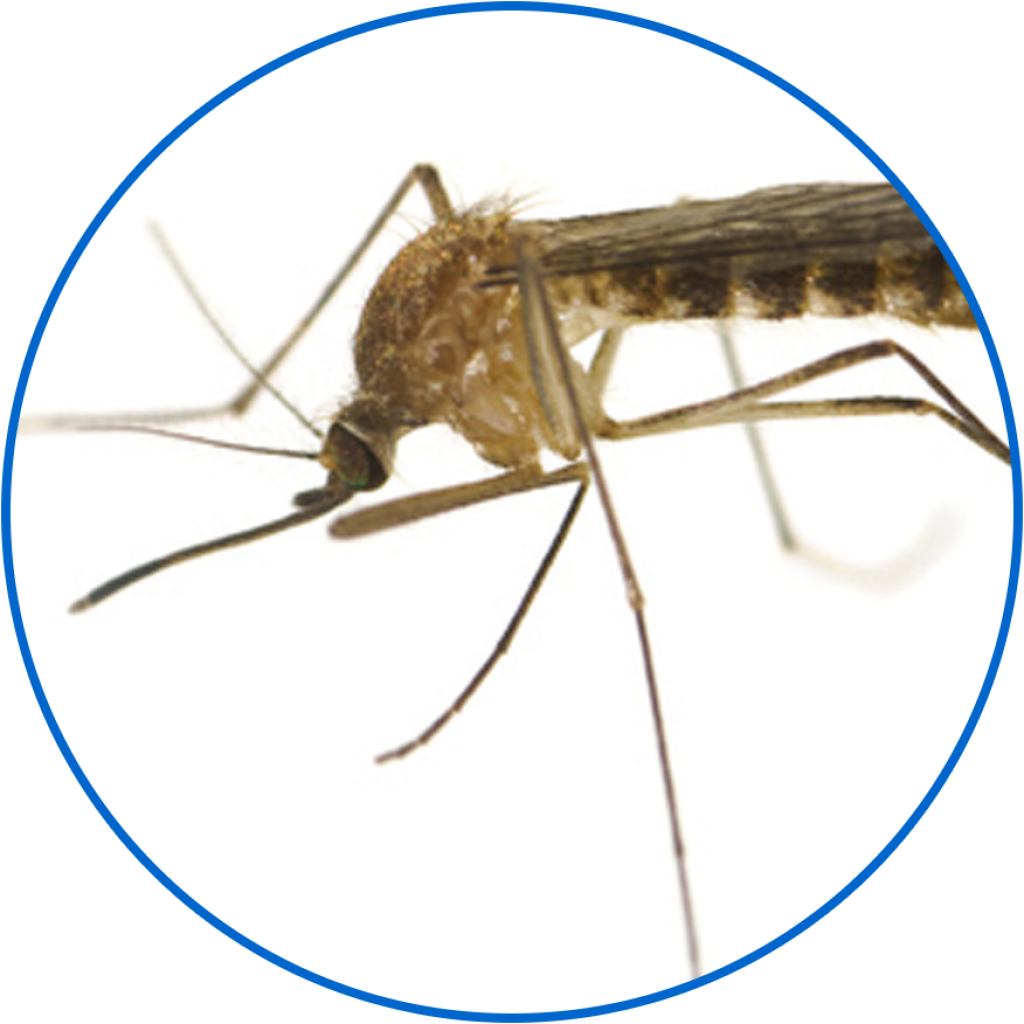HELP US DETECT INVASIVE MOSQUITO SPECIES
To date, the invasive mosquito Aedes aegypti has been detected in Citrus Heights, Orangevale, Arden-Arcade and Elk Grove in Sacramento County. In addition, this mosquito has also been found in cities of Winters and Davis in Yolo County.
Upon any new detection, District staff quickly mobilizes to conduct extensive door to door inspections in affected areas to speak to residents and look for mosquito breeding sources. Laboratory staff enhances their surveillance efforts to quickly determine the extent of the infestation. Depending on findings, mosquito control treatments are performed as necessary.
Invasive mosquitoes were found for the first time in Sacramento County in the city of Citrus Heights in 2019 and since then have also been found in different areas. Currently, District public health efforts are underway to protect all residents and we will continue with ongoing surveillance and control efforts throughout the year.
The Aedes aegypti mosquito is one of two mosquito species expanding their range in California. Aedes aegypti originated in Africa and Aedes albopictusoriginated in China, both mosquitoes have expanded their range throughout tropical and sub-tropical areas around the world. These mosquito species have the potential to spread to our area and are capable of transmitting multiple viruses including Zika, dengue and chikungunya. While these viruses are currently not known to be transmitted in California, human infections are commonplace in tropical regions and can be brought back through travel.
View our video on how we inspect homes for Aedes aegypti
More information:
View the District FAQ on Invasive mosquitoes and Zika
For current statewide information on invasive mosquitoes, visit the California Department of Public Health website.
View the CDPH Invasive Aedes Fact Sheet
INNOVATIVE CONTROL METHODS AGAINST INVASIVE MOSQUITOES
Visit our Innovative Control Methods Against Invasive Mosquitoes page or the Debug Fresno website, a successful program currently being implemented by the Consolidated Mosquito Abatement District in Fresno County using sterile male mosquitoes in the fight against Aedes aegypti invasive mosquitoes.
Additional links:
Visit our FAQ on the Sterile Insect Technique page
View a Video by Debug Fresno
NPR Science Friday: Controlling Mosquitoes, By Releasing Mosquitoes
Help us protect public health by learning how to identify invasive mosquito species. Early detection provides the best chance at eradication. These mosquitoes can easily be moved from place to place as adults in vehicles or as desiccation-resistant eggs, thus they may turn up anywhere. Because these mosquitoes do not travel very far once introduced to an area, they may not be detected by our current surveillance methods. Thus we need your help to keep and eye out for these invaders. Always report mosquito problems, especially aggressive daytime biting mosquitoes, by calling us at 800-429-1022 or ONLINE HERE.
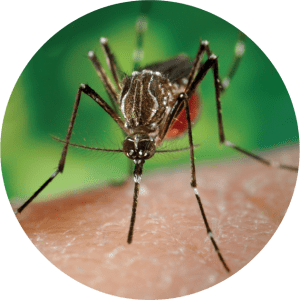
Aedes aegypti (YELLOW FEVER MOSQUITO)
This mosquito has a worldwide distribution in tropical and subtropical areas, and in the United states has been established along the east coast and throughout the southern United States. This mosquito is currently expanding its range into California.
- Aedes aegypti is a small, dark mosquito, with white-banded legs, and a distinctive white violin-shaped marking on its thorax.
- Aedes aegypti has the ability to transmit, among other viruses, dengue, chikungunya, yellow fever, and Zika viruses.
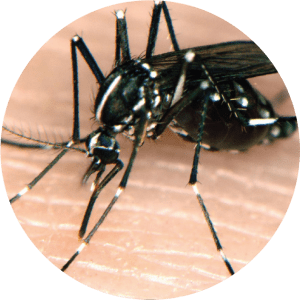
Aedes albopictus (ASIAN TIGER MOSQUITO)
This mosquito is native to Asia, was recently re-introduced to Los Angeles County in 2011, and has spread throughout neighboring areas.
- Aedes albopictus is a small, black mosquito with white-banded legs, and a striking white stripe down its thorax.
- Aedes albopictus has the ability to transmit dengue, chikungunya, and yellow fever viruses but it has also been found infected with West Nile, eastern equine encephalitis, and Japanese encephalitis viruses. It can also transmit dog heartworm.
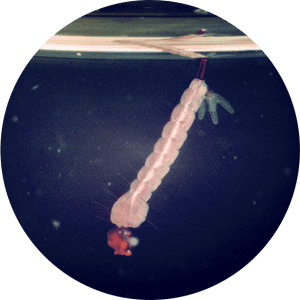
COMMON CHARACTERISTICS OF BOTH SPECIES
- These mosquitoes are aggressive daytime biters that readily enter homes in search of a blood meal.
- They are approximately 1/8 – 1/4 of an inch in length.
- They prefer biting people but also feed on other domestic animals, mostly mammals.
- The entire aquatic cycle, from the time an egg is laid to the time an adult emerges, can occur in as little as seven to ten days. The lifespan of an adult is about three weeks.
- These species have a short flight range, so egg production sites are likely to be close to where adult mosquitoes are found.
- Eggs are laid over a period of several days, are resistant to drying out, and can survive for periods of six months and beyond. These mosquitoes species are relatively sensitive to cold temperatures and survive the winter as eggs, when the eggs are covered with warm water, larvae emerge and the life cycle continues.
Common Breeding Sources of Both Species
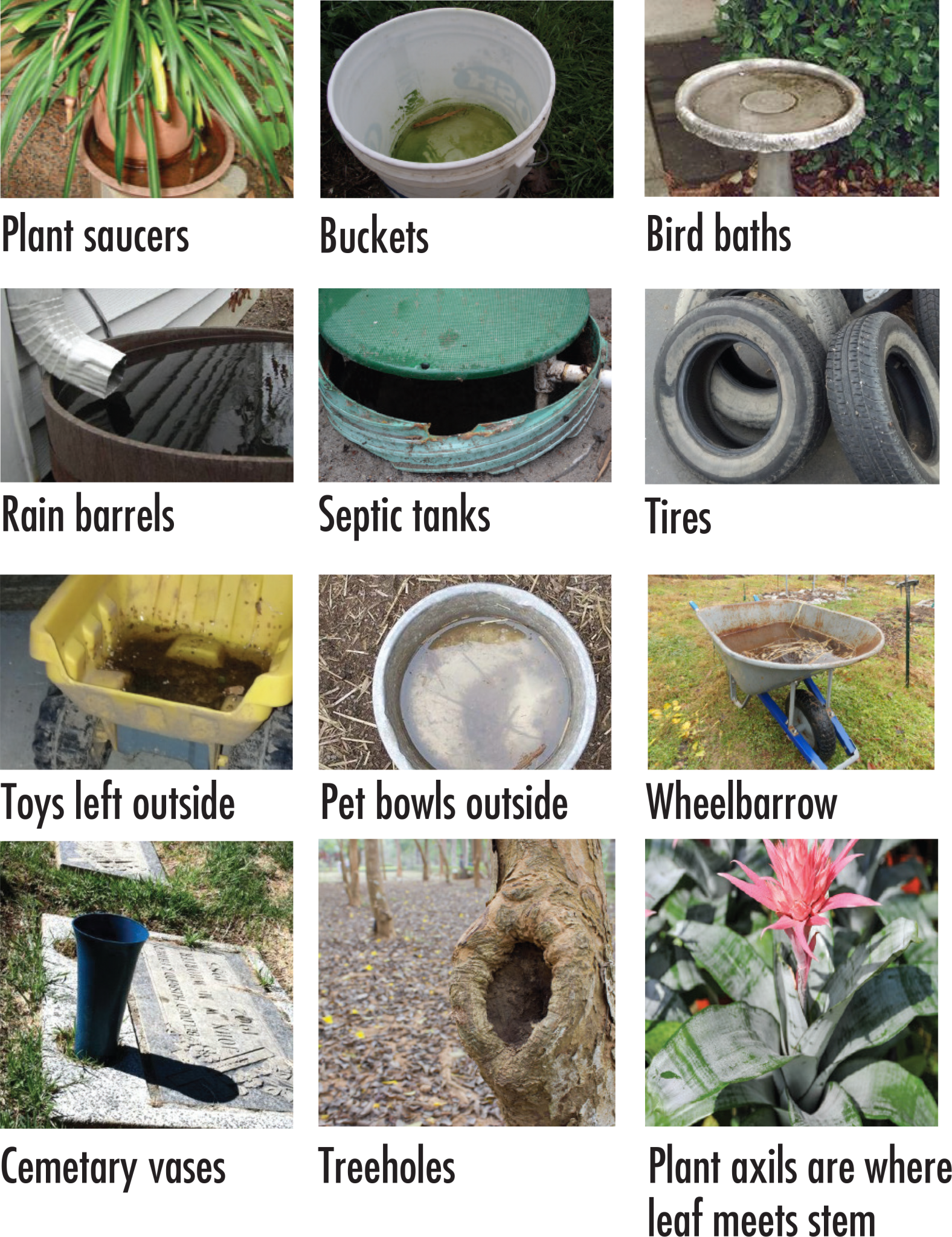
The Zika Virus
Zika virus is predominantly spread by the bite of an infected mosquito (Aedes aegypti or Aedes albopictus). Although there has been no record of mosquito-borne Zika transmission in California, infected travelers return to the states each year. When mosquitoes capable of transmitting Zika are present, there is always the possibility of local transmission.
Zika can be passed from a pregnant woman to her fetus. Infection during pregnancy can cause certain birth defects. Zika is also sexually transmitted and can be passed on from an infected person to a partner. Most people with Zika don’t get sick, however those that do get sick may have a fever, rash, joint pain and/or red eyes. There is no vaccine for Zika and preventing mosquito bites is the best protection.
Learn more from the CDC website on Zika or the CDPH website.
MOSQUITO PUBLICATIONS


